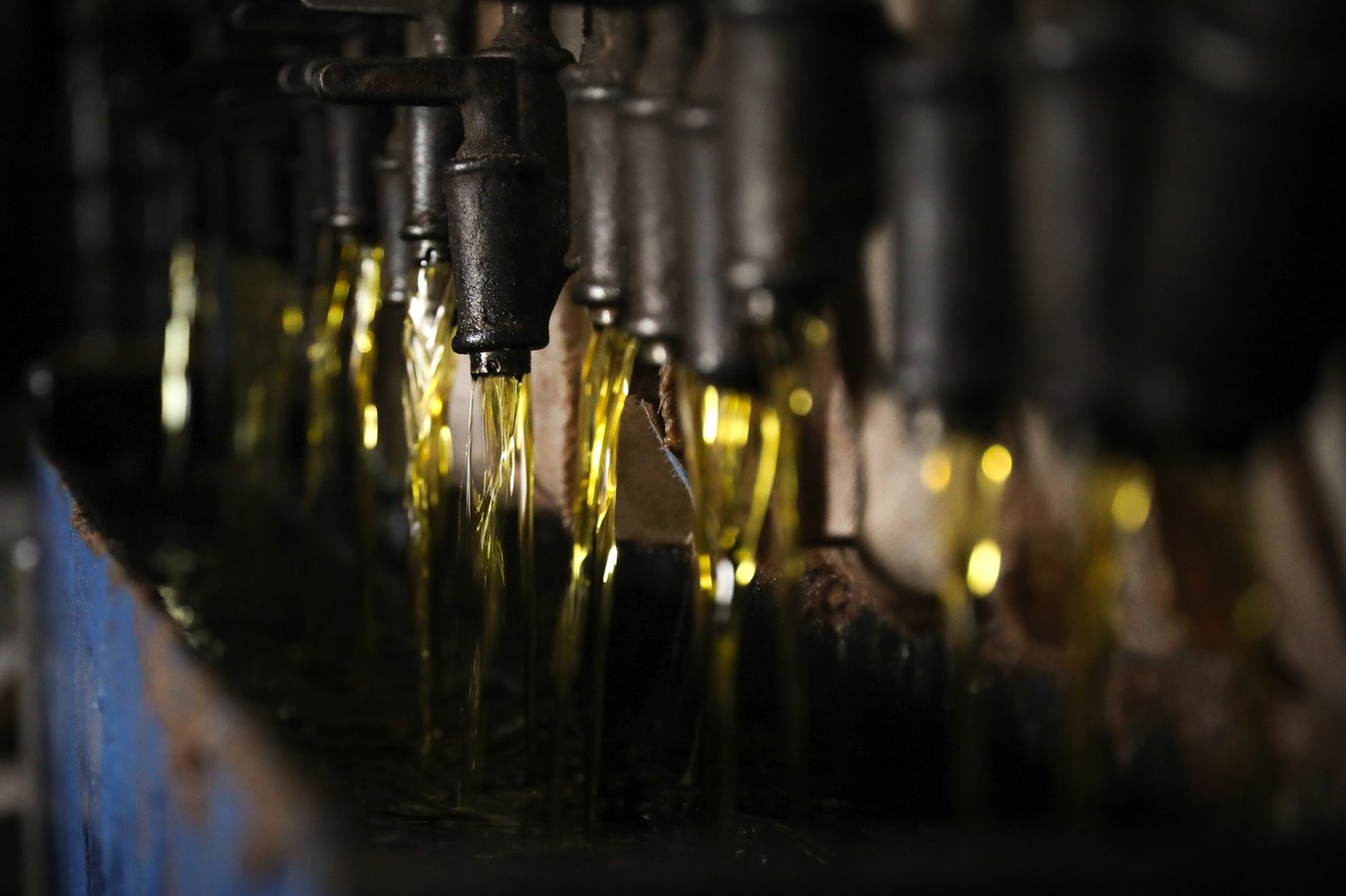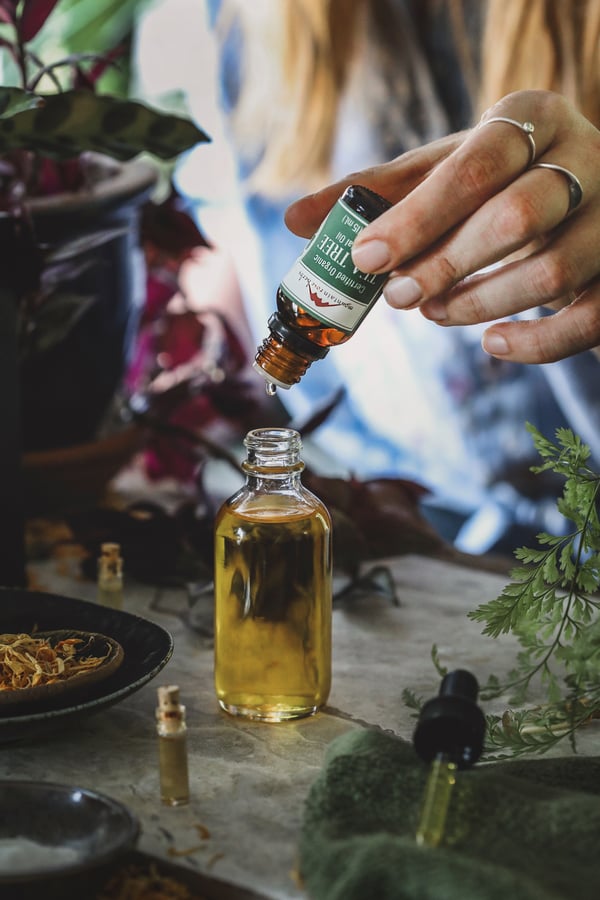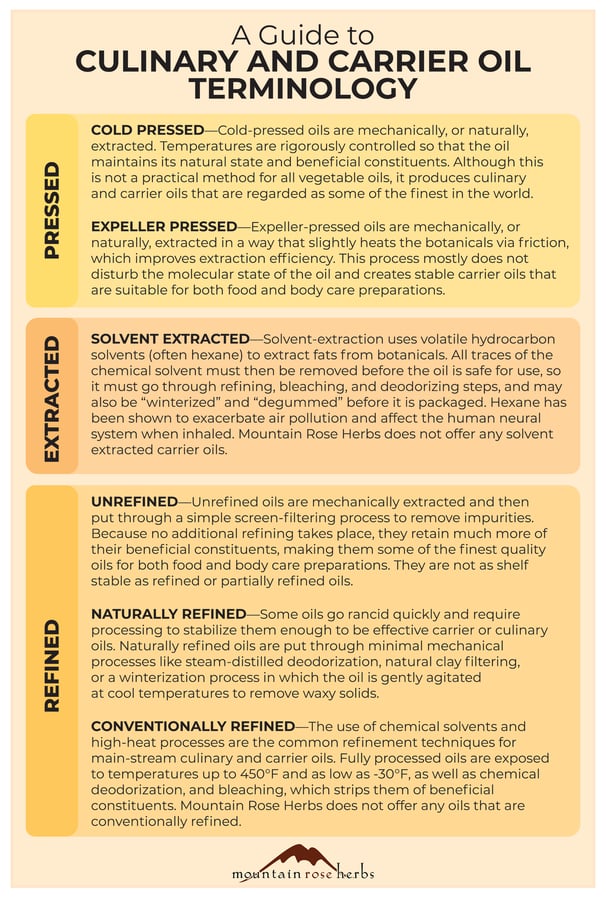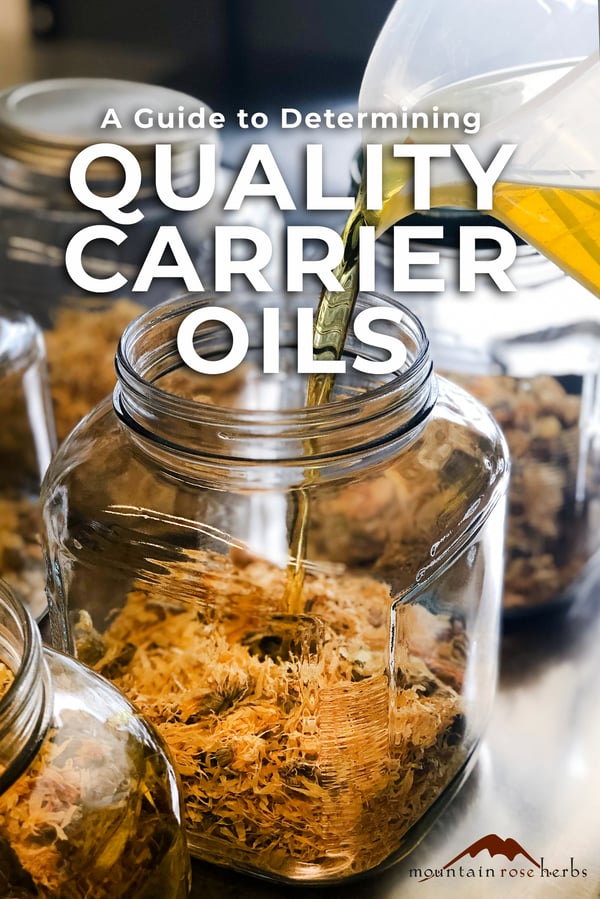Have you ever had the experience of talking about something—that to you is the most normal thing in the world, like talking about ice cream—only to discover that your audience is looking at you blankly, and you realize that they have no idea what you’re saying? I had a conversation recently with a couple of folks who expressed interest in essential oils for massage. I was expounding on appropriate carrier oils to use for DIY massage oil recipes and had gone on for a couple of minutes on this topic, when I saw them looking at each other with perplexed faces. As I sputtered to a stop, one of them said, “What is a carrier oil?” Ah, right; I clearly needed to back up and start at the beginning. With that in mind, let’s take a moment to talk about carrier oils, starting with what the heck they are and how they’re made.
What is a Carrier Oil?
“Carrier oil” is a term often used in the context of aromatherapy, cosmetics, and body care recipes. In simplest terms, “carrier” oils—also sometimes called “base” or “fixed” oils—are neutral oils (they have little to no scent) that are used to dilute essential oils and “carry” them into the skin. In other words, they make pure essential oils safe for use and facilitate their absorption. Carriers can also be lotions, aloe vera gel, witch hazel extract, etc. but oils are integral to a wide variety of body care and aromatherapy recipes including perfumes, massage oils, salves, creams, bath oils, and more.
Carrier oils are usually vegetable oils like coconut oil, babassu oil, avocado oil, sunflower oil, olive oil, etc. made from the nuts, seeds, fruit, or kernels of a plant. As with culinary oils (FYI, some of the finest culinary oils also make the best carrier oils), every carrier oil has a unique composition that makes it ideal for some applications and inappropriate for others. For instance, I like extra virgin olive oil in salves, but would not personally use that oil in a facial cream.
On their own, carrier oils contain a variety of skin-nurturing vitamins and nutrients, and are excellent at absorbing the additional benefits of infused herbs and essential oil blends. This makes them a perfect vehicle to bring customized benefits to your skin. The constituents in the botanical source of a particular oil, as well as the refinement process (or lack thereof), impact its quality, color, viscosity, and speed of absorption. Understanding how carrier oils are made—how they are extracted and how they are refined—will help you create recipes that best match your goals for your skin and hair care, as well as for other therapeutic applications.
How Oils are Extracted from Plants
Some oils can be “cold pressed” with minimal processing to produce a clean, healthful oil (olive oil is a great example). Others need a little more help in the extracting process and in removing trace elements that can make oils dark and off-flavored. The typical ways to extract oils from plants include cold pressing, expeller pressing, and solvent extraction.
- Cold-Pressed Oils—Cold-pressed oils are mechanically, or naturally, extracted. Usually, the clean nut, seed, fruit, or vegetable is ground into a paste and then simply pressed to separate the oil from the pulp. Temperatures are rigorously controlled with this method to ensure they do not exceed 80-90°F. This helps the oil maintain its natural state and beneficial constituents. Although this is not a practical method of extraction for all vegetable oils, it produces culinary and carrier oils that are regarded as some of the finest in the world. Cold pressing is the oldest extraction method and produces the most pure state of an oil with the highest nutrition and array of natural botanical constituents.
- Expeller Pressed Oils—Botanicals that cannot be cold-pressed can be expeller-pressed. This natural process is also a mechanical extraction, but brings a small amount of heat to the botanicals via friction. An expeller press (also called a screw press) uses both continuous friction and pressure using hydraulic presses to extract the oils, and the friction naturally creates some heat (approximately 120-200°F). Because this process mostly doesn’t disturb the molecular state of the oil, it creates stable carrier oils that are extremely suitable for body and hair care recipes and often makes a fine food grade oil as well. Although this can be an excellent way to produce a high quality oil, it requires a larger amount of botanical material than mainstream solvent-extraction methods and isn’t as efficient, which is why many conventional oil manufacturers instead use chemicals and high heat.
- Solvent-Extracted Oils—In the solvent extraction process, the botanical material is ground into a paste and then “purged” or washed with a volatile hydrocarbon solvent (often hexane) to release the fats. All traces of the chemical solvent must then be removed and the resulting oil must go through refining, bleaching, and deodorizing steps before it is packaged. There is work being done to find “green solvents” for oil extraction, but currently this—using volatile hydrocarbon solvents like hexane—is the conventional oil extraction method, and hexane has been shown to both exacerbate air pollution and affect the human neural system when inhaled. The growing awareness about the potential issues of hexane use in oil extraction is driving the search for other solutions; meanwhile, looking to cold-pressed and expeller-pressed carrier oils instead of solvent-extracted ones may be a wise move. Please know that Mountain Rose Herbs does not offer solvent-extracted carrier oils and this information is provided so you can make the best decisions for yourself and your family.
Refined vs. Unrefined Carrier Oils
Once extracted, carrier oils may be unrefined, naturally refined, or conventionally refined.
Unrefined Oils—Unrefined oils are mechanically extracted and then put through a simple screen -filtering process to remove impurities. No additional refining takes place. This means they retain much more of their beneficial constituents, making them some of the finest quality oils for both food and body care preparations. They retain a rich, strong flavor and color that is true to their natural state, so they are often darker in color and richer in scent. Because of this, unrefined oils are not as stable as refined or partially refined oils and may not have a neutral enough scent to make them ideal for some body care and aromatherapy recipes.
Naturally Refined Oils—Some oils are known to go rancid quickly and require some processing to stabilize them and remove heavy odors or deep colors in order for them to be effective carrier or culinary oils. But that doesn’t mean they need to be chemically refined or put through high heat processes that destroy the natural constituents. Naturally refined oils—also called mechanically refined or partially refined—may be put through one or two mechanical methods, including (but not limited to) steam-distillation deodorization that removes volatile compounds (aromas), a winterization process in which the oil is gently agitated at cool temperatures to remove waxy solids and keep the oil in a liquid state, and a natural clay-filtered bleaching process.
Conventionally Refined Oils—The use of chemical solvents and high-heat processes are the common refinement techniques for main-stream culinary and carrier oils. These processes deodorize and bleach the oils, which also strips them of many beneficial constituents. Fully processed oils are often exposed to all of the methods of refinement, including a high-heat process that reaches temperatures up to 450°F, a “winterization” process that exposes them to temperatures as low as -30°F, chemical deodorization, and then a final bleaching, which is a refinement process employing natural clays and other mediums to alter or remove any lingering colors and odors. This makes for an economical cosmetic grade oil that is used for body care products in that it is predictable and isn’t bringing its own scents to your recipes. Conventionally refined oils are often cheaper and are certainly effective, but they have been robbed of their natural beneficial constituents and are not fantastic for the planet.
Mountain Rose Herbs does not sell chemically or high-heat refined oils, so when we list a carrier oil as "refined” on our website, we are saying that that oil has been naturally (mechanically or physically) refined.
So, how do you know which oil to choose for your best recipes and herbal formulations? You have to look at your end goal to answer that question. The more robust aroma and flavor of a cold-pressed, unrefined oil may suit your needs fine, particularly for salves in which scent is less of an issue. However, customized formulations for delicate skin or in which you want to let the aroma of an essential oil blend shine may require an oil that has been naturally refined and deodorized.
Want to Learn More About How to Use Carrier Oils with Essential Oils?
Learn About the Best Carrier Oils for Aromatherapy
You may also be interested in:
- How to Choose the Best Cooking Oil + Oil Smoke Point Chart
- How to Make Herb-Infused Oils for Culinary & Body Care Use
- Guide to Substituting Ingredients in Body Care Recipes















